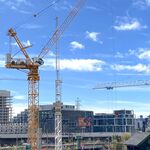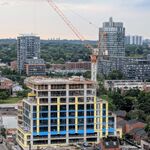howl
Active Member
. . .
The Yonge Line should go north as far as Steeles for Yonge since the ridership north on Yonge only justify a BRT now, let along LRT. Once GO is upgraded to all day service, running every 15 minutes and this includes the existing infrastructure, will not need a subway for a least a 100 years due to the density between Steeles and Highway 7. It may get to Clark, but beyond that, no density unless you bulldoze the area 100%.
. . .
The idea is to extend the Yonge line to Highway 7. There are three of reasons for this:
1. The Yonge/Highway 7 area has a LOT of re-developable land and is designated as an Urban Growth Centre with a target of 200 ppj/ha. That's 35,000 people and jobs (compared to 2,600 in 2001). It will be the major urban focus for York Region in twenty years.
2. The proximity to Highway 7 and Highway 407 will make this location a great hub for park-and-ride commuters. This will take a lot of the pressure off Finch allowing that area to re-develop more intensely.
3. The GO station at this location can be used to connect people from northern York Region to jobs along the Yonge corridor north of downtown. This will improve the viability of uptown and mid-town Toronto as office nodes.
The assertion that the subway shouldn’t go north of Steeles because there isn’t the demand yet illustrates the problem lay-people (and armchair planners) have in understanding transit planning. It takes a long time to plan and build a higher-order transit system and it takes a long time to develop urban centres. The two must be coordinated – building the subway to Highway 7 will allow the Richmond Hill Urban Growth Centre to grow, but the subway must be there before people large number of people can move in.
Planning Transit isn't just about solving the immediate problems. It’s about making informed choices and coordinating all environmental, social, land use and transportation plans so that all system work in an integrated manner in the future.
Last edited:





